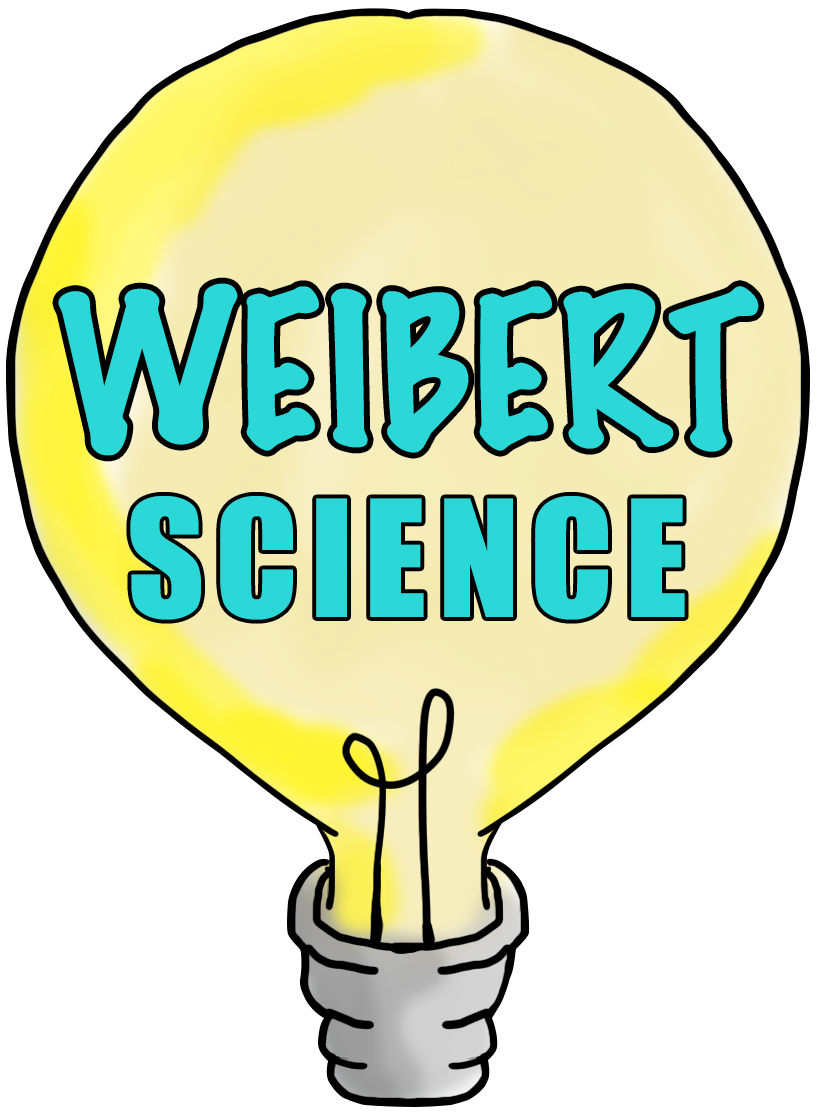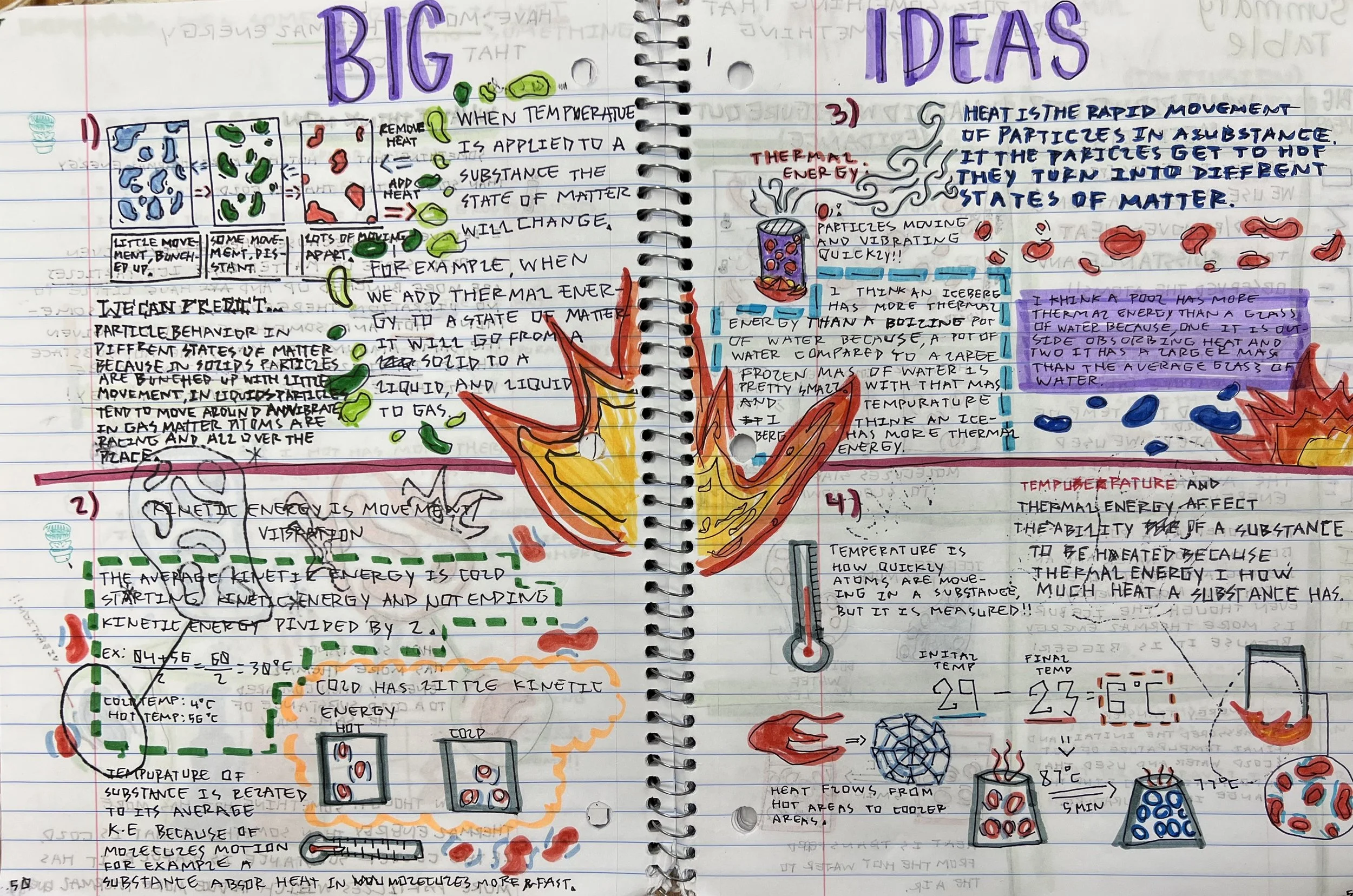Phenomenal Science Notebooks Maximize Student Processing
Stop the cutting and gluing and ditch the worksheets!
I often ask science teachers if they notebook. I get about a 50/50 yes…with most saying they glue in all the worksheets and that’s how they notebook. The ones who don’t notebook have stories of how they tried hard to get them going but it failed and they never want to go back. I hear you on all of this! The Weibert Science way of notebooking is freeing and takes away stress and guessing what to put on those notebook pages! Plus ALL students succeed- my strategies have been proven over and over for 23 years 🙂
So what exactly are Weibert Science Phenomenal Science Notebooks?
There is something unique and powerful about learning with traditional pencil and paper (check out the research on my Padlet below). When students engage in processing using color, picture, and text in a paper notebook, their learning becomes unique and more impactful. The physical act of putting pen to paper helps students to not only process what they are doing, but process it in their own unique way that is relatable and meaningful to them.
When it comes to notebooking in science, not all notebooks and approaches are the same. What is unique about Weibert Science Phenomenal Science Notebooks is that they are student-centered, no two notebooks look exactly the same because of how students choose to process the content. There are few glued-in (if any) handouts and students are the ones actually inputing information into the notebook in their own way using color, picture, and text.
You may be wondering - are Phenomenal Science Notebooks just a free-for-all then? How do I get students to record the needed information? The answer: Templates. Templates are the teacher-created scaffolds which show students how to set up the space and how to use the space. Templates are critical in keeping students on-track and on-topic.
3 Ways That Weibert Science Phenomenal Notebooks Maximize Student Processing:
The use of Color-Picture-Text activating both sides of the brain and encoding information. This is known as Sketchnoting.
Students create the work being done by using teacher-designed templates. Templates set up the page to maximize learning in a low floor / high ceiling model. ALL students succeed with this style of notebooks. SPED, ELL, and IEP students excel with pictures and the structures of templates. High level students in GATE programs are given the opportunity to go all in and spend all the time they want processing and drawing.
Unit Design - do your students learn concepts and apply them in a real world context? The Weibert Science way of notebooking uses four unit templates that I created to bookend units to engage students in ways most curriculums miss. Anchor Phenomenon, Big Ideas, Summary Tables, and Summative Tasks. All units use these templates and students absolutely love doing the work to make sense of unit question being asked of them.
I know…it sounds too good to believe! Notebooking the Weibert Science way really does work with students and teachers alike, fully engaging students and streamlining for teachers. Gone is the cutting and gluing! Gone are the blank pages and lost notebooks! Take a look at some of the testimonials and the student work on my website. Come join me in my Summer Training with my All Access Package-you get everything I have created with both live and on demand training. Let's change up and enhance your science teaching!
Resources Mentioned:
Ditch The Worksheets-Join me for a free training on how to move away from worksheets. We take a typical worksheet given in a science class and work through the steps to ditch the worksheet and give students the opportunity to show what they have learned in new ways.
Padlet- Research articles and many of my best free resources to explore.
Phenomenal Science Training-Everything Weibert Science Has To Offer In One Package-Level up with sketchnotes, templating assignments, and designing better units with my unit planner and supporting templates! It’s on demand training with a workbook sent to you-let’s learn together!
“When I first looked into interactive science notebooks, I was not sold on them. I thought it was glued in forms. After seeing samples I realized that you could see student thought on each page. I tried them and was hooked. I can see growth and consistency in the way I teach and interact with my students. Most importantly with all the student work in one place-the students are able to interact with the content in ways they can’t with worksheets.”



